1. Pendahuluan
When it comes to the production of high-quality glazed tiles for roofing and other architectural purposes, a mesin pembuat gulungan ubin mengkilap plays a vital role. This advanced manufacturing equipment offers numerous benefits, including cost efficiency, versatility in design, time efficiency, and durability. In this article, we will explore the intricacies of glazed tile roll forming machines, how they work, the different types available, factors to consider when choosing one, maintenance and troubleshooting tips, safety precautions, applications, and future trends.
2. What is a Glazed Tile Roll Forming Machine?
A glazed tile roll forming machine is a specialized equipment used to manufacture glazed tiles from various materials such as steel, aluminum, or galvanized metal. It utilizes a continuous roll forming process to shape and transform flat metal sheets into custom-designed tiles with a glazed finish. The machine consists of multiple rollers and a series of forming stations that gradually shape the metal into the desired tile profile.
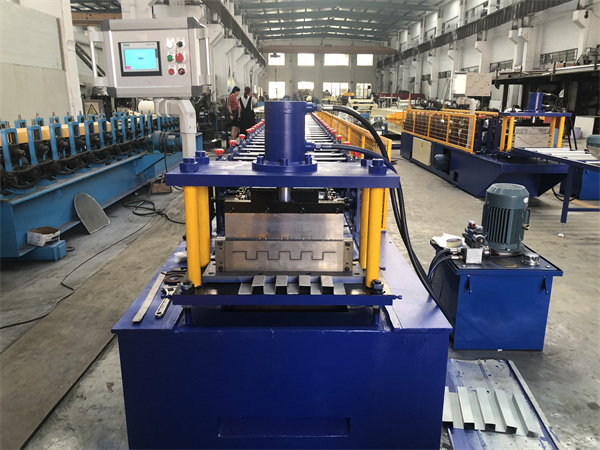
3. Benefits of Using Glazed Tile Roll Forming Machines
3.1 Cost Efficiency
One of the significant advantages of using glazed tile roll forming machines is their cost efficiency. These machines can produce large volumes of glazed tiles at a relatively low cost per unit. The automated production process reduces labor costs and minimizes material waste, ensuring optimal resource utilization. Additionally, roll forming machines are known for their high-speed production capabilities, further enhancing cost-effectiveness.
3.2 Keserbagunaan dalam Desain
Glazed tile roll forming machines offer exceptional design flexibility, allowing for a wide range of tile profiles and dimensions. Manufacturers can customize the machine’s tooling and settings to create various shapes, sizes, and patterns to meet diverse customer requirements. This versatility enables architects, contractors, and homeowners to choose from an extensive selection of glazed tile options, enhancing aesthetic appeal and design possibilities.
3.3 Time Efficiency
Compared to traditional tile manufacturing methods, glazed tile roll forming machines offer significant time efficiency benefits. The continuous roll forming process enables rapid and uninterrupted production, eliminating the need for time-consuming manual operations. Additionally, the quick setup and changeover times of these machines allow for efficient production scheduling and faster order fulfillment, reducing lead times and increasing customer satisfaction.
3.4 Daya Tahan dan Kekuatan
Glazed tiles produced using roll forming machines exhibit exceptional durability and strength. The precise and controlled forming process ensures uniformity in tile thickness, shape, and structural integrity. This results in tiles that can withstand harsh weather conditions, resist corrosion, and maintain their aesthetic appeal over an extended period. The durability and strength of these tiles contribute to their long lifespan and low maintenance requirements.

4. How Does a Glazed Tile Roll Forming Machine Work?
A glazed tile roll forming machine follows a systematic process to transform flat metal sheets into glazed tiles. Let’s explore the key steps involved:
4.1 Material Loading
The process begins with loading the raw material, typically metal coils, onto the machine. The coils are unwound and fed into the roll forming machine through a decoiler. The material feeding system ensures a continuous supply of metal sheets for the forming process.
4.2 Proses Pembentukan Gulungan
Once the material is fed into the machine, it passes through a series of rollers and forming stations. Each set of rollers gradually shapes the metal into the desired tile profile. The rollers apply pressure and bending forces to deform the metal sheet, transforming it into the desired shape and dimensions. The number and configuration of the rollers vary depending on the specific tile design.
4.3 Memotong dan Menggunting
After the roll forming process, the continuous strip of formed tiles needs to be cut into individual pieces. The glazed tile roll forming machine incorporates a cutting mechanism, such as a flying shear or hydraulic press, to precisely cut the formed tiles at predetermined lengths. This ensures uniformity and accuracy in the final product.
4.4 Stacking and Packaging
Once the tiles are cut, they are stacked and packaged for transportation and storage. Automated stacking systems or conveyor belts facilitate efficient collection and stacking of the finished tiles. The packaging process may involve bundling, shrink-wrapping, or palletizing, depending on the manufacturer’s requirements.
By following these steps, a glazed tile roll forming machine efficiently transforms raw materials into high-quality glazed tiles with speed, precision, and consistency.
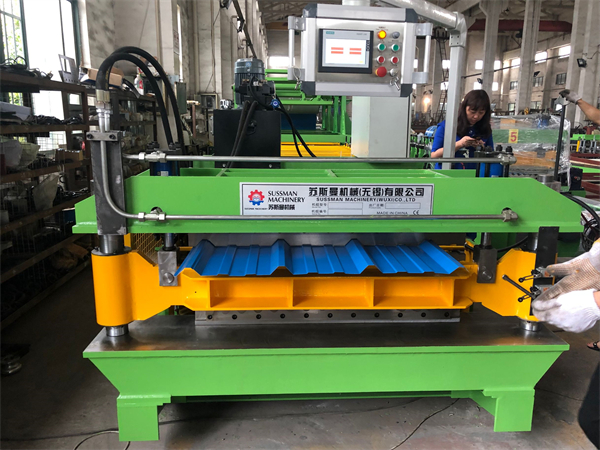
5. Different Types of Glazed Tile Roll Forming Machines
Glazed tile roll forming machines come in different types, each catering to specific production needs and requirements. Let’s explore some of the commonly used types:
5.1 Single-Layer Glazed Tile Roll Forming Machine
A single-layer glazed tile roll forming machine is designed to produce single-layer glazed tiles. These machines have a single set of rollers and forming stations dedicated to shaping the metal sheets into the desired tile profile. They are ideal for applications where a single layer of glazed tile is sufficient, such as residential roofing or small-scale construction projects.
5.2 Double-Layer Glazed Tile Roll Forming Machine
Double-layer glazed tile roll forming machines are capable of producing two layers of glazed tiles simultaneously. These machines feature two sets of rollers and forming stations, allowing for the production of double-layered tiles with different designs or colors. They are commonly used in projects that require aesthetic variation or enhanced durability.
5.3 Automatic Glazed Tile Roll Forming Machine
Automatic glazed tile roll forming machines incorporate advanced automation features for efficient and high-volume production. These machines are equipped with automated material feeding systems, precision control systems, and integrated cutting and stacking mechanisms. They are suitable for large-scale manufacturing facilities and offer enhanced productivity, accuracy, and ease of operation.
The choice of the glazed tile roll forming machine depends on the specific production requirements, desired tile characteristics, and production capacity.
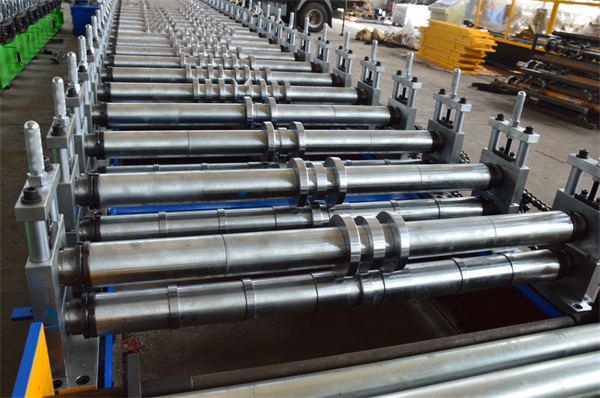
6. Factors to Consider When Choosing a Glazed Tile Roll Forming Machine
When selecting a glazed tile roll forming machine, several crucial factors should be taken into account. Let’s explore some of these factors:
6.1 Kapasitas Produksi
The production capacity of the machine is a vital consideration. It determines the quantity of glazed tiles the machine can produce within a given timeframe. Evaluate your production requirements and choose a machine that can meet your desired output, considering factors such as machine speed and the number of forming stations.
6.2 Machine Configuration
The machine’s configuration refers to its specific design features, including the number of rollers, forming stations, and cutting mechanisms. Consider the complexity and variety of tile profiles you need to produce and ensure that the machine’s configuration can accommodate your requirements.
6.3 Quality of Output
The quality of the glazed tiles produced is crucial for customer satisfaction and the reputation of your business. Evaluate the precision and consistency of the machine’s forming process, as well as the overall build quality. Opt for machines that provide excellent dimensional accuracy and surface finish.
6.4 Biaya dan Pengembalian Investasi
Consider the cost of the machine and the return on investment it can provide. Assess not only the initial purchase cost but also factors such as maintenance requirements, energy consumption, and potential downtime. Choose a machine that offers a balance between cost-effectiveness and long-term performance.
By carefully considering these factors, you can select a glazed tile roll forming machine that aligns with your production goals and ensures efficient and high-quality tile manufacturing.
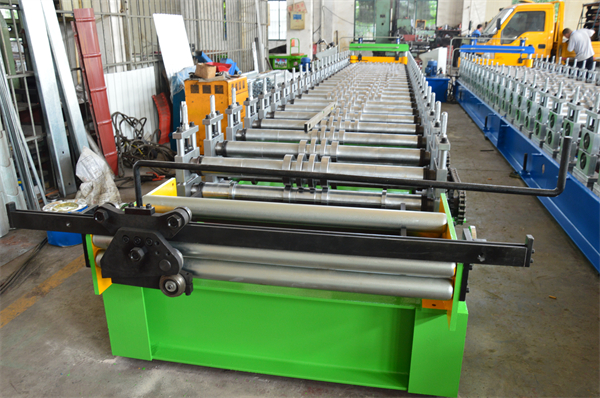
7. Maintenance and Troubleshooting of Glazed Tile Roll Forming Machines
To ensure optimal performance and longevity of a glazed tile roll forming machine, proper maintenance is essential. Additionally, troubleshooting common issues promptly can minimize downtime and production interruptions. Let’s explore some maintenance and troubleshooting tips:
7.1 Pembersihan dan Pelumasan Rutin
Regular cleaning of the machine’s rollers, forming stations, and cutting mechanisms is crucial to remove debris and prevent build-up that can affect performance. Lubrication of moving parts helps reduce friction and extend the machine’s lifespan. Follow the manufacturer’s guidelines for recommended cleaning and lubrication procedures.
7.2 Inspection and Replacement of Components
Periodically inspect the machine’s components, including rollers, bearings, belts, and electrical connections, to identify any signs of wear, damage, or misalignment. Replace worn or damaged parts promptly to maintain optimal performance and prevent further issues.
7.3 Troubleshooting Common Issues
Familiarize yourself with common issues that may arise during machine operation, such as misfeeds, improper cut lengths, or irregular tile shapes. Troubleshoot these issues systematically by checking for material blockages, adjusting settings, or consulting the machine’s manual for specific troubleshooting steps. If necessary, seek assistance from the manufacturer or a qualified technician.
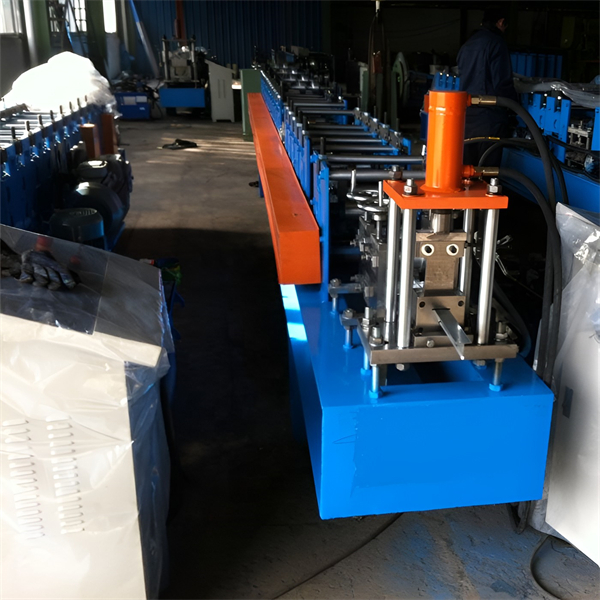
8. Safety Precautions When Operating Glazed Tile Roll Forming Machines
Safety should be a top priority when operating glazed tile roll forming machines. Adhering to proper safety precautions can prevent accidents and ensure the well-being of operators. Here are some essential safety measures:
8.1 Proper Training and Education
Operators should receive thorough training on how to operate the glazed tile roll forming machine safely. This includes understanding its components, controls, and emergency procedures. Training should also cover best practices for material handling, maintenance, and troubleshooting. Regular refresher courses can help reinforce safety protocols.
8.2 Personal Protective Equipment (PPE)
Operators must wear appropriate personal protective equipment (PPE) to minimize the risk of injury. This may include safety glasses or goggles, ear protection, gloves, and steel-toed boots. PPE should be in good condition, properly fitted, and worn consistently during machine operation.
8.3 Machine Guarding
Glazed tile roll forming machines should be equipped with adequate machine guarding to prevent accidental contact with moving parts. This may include safety barriers, interlocks, and emergency stop buttons. Regularly inspect machine guards to ensure they are in place and functioning correctly.
8.4 Emergency Stop Systems
Emergency stop systems should be easily accessible and clearly marked on the machine. Operators should be trained on how and when to activate these systems in case of emergencies or abnormal situations. Regularly test the emergency stop systems to ensure they are operational.
By following these safety precautions, operators can work with glazed tile roll forming machines confidently, minimizing the risk of accidents and promoting a safe working environment.
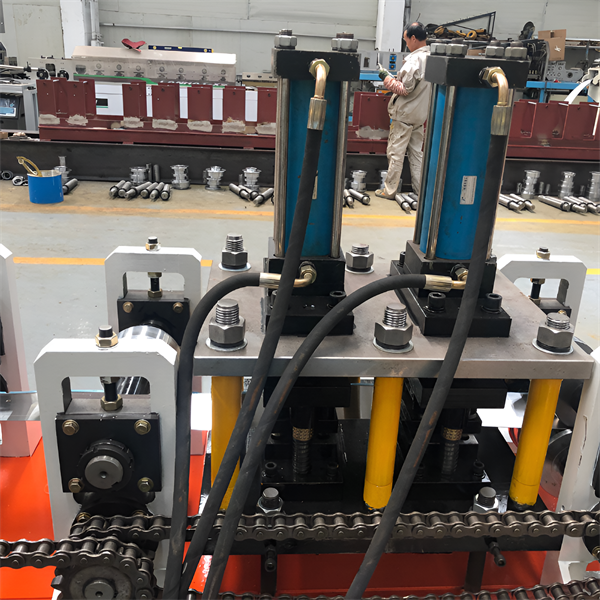
9. Applications of Glazed Tile Roll Forming Machines
Glazed tile roll forming machines find application in various industries and construction projects. Let’s explore some common applications:
9.1 Roofing and Cladding
Glazed tiles manufactured by roll forming machines are widely used for roofing and cladding purposes. Their aesthetic appeal, durability, and weather resistance make them a popular choice for residential, commercial, and industrial buildings. Glazed tiles offer protection against moisture, UV radiation, and thermal insulation, enhancing the overall performance of the roofing system.
9.2 Residential and Commercial Buildings
Glazed tiles are also used for decorative purposes in residential and commercial buildings. They can be applied to walls, ceilings, and facades to enhance the visual appeal and create a distinctive architectural statement. The versatility of glazed tile roll forming machines allows for the production of various designs and colors, catering to different aesthetic preferences.
9.3 Architectural Designs
Architects and designers often incorporate glazed tiles into their architectural designs to add texture, color, and visual interest. The ability to create custom tile profiles and patterns using roll forming machines allows for unique and innovative architectural expressions. Glazed tiles can be used in interior spaces, exterior cladding, decorative accents, and artistic installations.
With their versatility and aesthetic possibilities, glazed tile roll forming machines contribute to the creation of visually striking and durable structures across different applications.
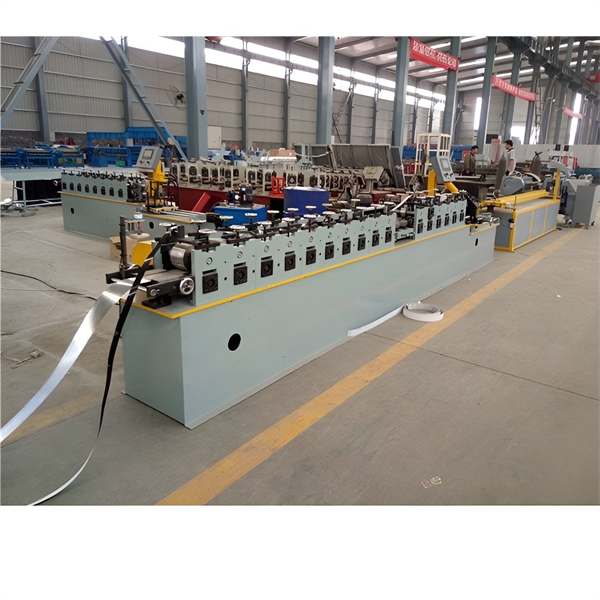
10. Future Trends in Glazed Tile Roll Forming Machines
Glazed tile roll forming machines are continuously evolving to meet the demands of the industry and technological advancements. Here are some future trends to watch for:
10.1 Technological Advancements
Advancements in technology are driving the development of more efficient and sophisticated glazed tile roll forming machines. These machines may incorporate advanced automation, computerized control systems, and machine learning algorithms to optimize production speed, accuracy, and material utilization.
10.2 Efisiensi Energi
With a growing focus on sustainability, future glazed tile roll forming machines are likely to prioritize energy efficiency. This may involve the integration of energy-saving components, improved insulation, and the utilization of renewable energy sources in machine operation.
10.3 Kustomisasi dan Personalisasi
The demand for customized and personalized glazed tiles is on the rise. To cater to this trend, future glazed tile roll forming machines may offer enhanced customization capabilities. This could include the ability to produce tiles with unique designs, patterns, and surface textures, allowing customers to create truly one-of-a-kind tile solutions for their projects.
Furthermore, advancements in digital printing technology may enable the direct printing of custom designs onto glazed tiles during the roll forming process. This opens up possibilities for intricate graphics, logos, and even photorealistic images on the tiles, providing endless options for personalization.
As technology continues to evolve, glazed tile roll forming machines will likely embrace these trends, offering greater design flexibility and customization options for architects, contractors, and homeowners.
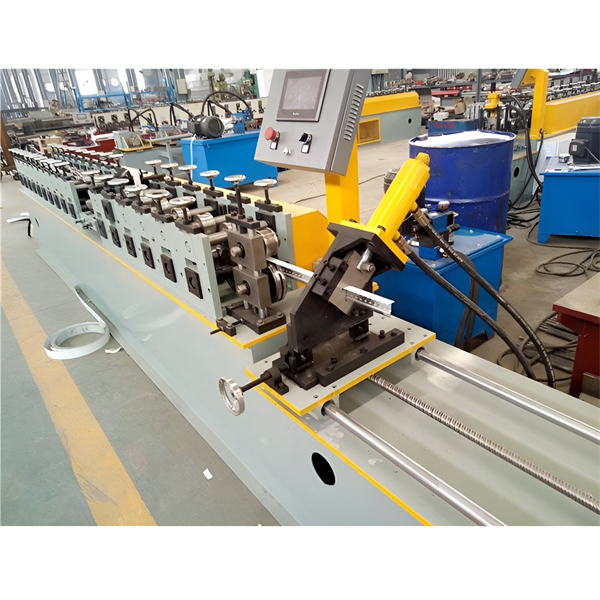
11. Kesimpulan
Glazed tile roll forming machines are revolutionizing the production of high-quality glazed tiles for roofing, cladding, and architectural purposes. They offer cost efficiency, versatility in design, time efficiency, and durable, strong tiles. By understanding how these machines work, the different types available, and the factors to consider when choosing one, manufacturers can make informed decisions and optimize their production processes.
Proper maintenance, troubleshooting, and adherence to safety precautions ensure the safe operation of these machines and maximize their lifespan. Glazed tile roll forming machines find applications in roofing, cladding, and architectural designs, adding aesthetic appeal and functionality to various projects.
Looking ahead, technological advancements, energy efficiency, and customization will shape the future of glazed tile roll forming machines, allowing for even more innovative and personalized tile solutions.
FAQ
1. What materials can be used with a glazed tile roll forming machine?
Glazed tile roll forming machines are compatible with various materials, including steel, aluminum, and galvanized metal. The choice of material depends on factors such as desired strength, corrosion resistance, and aesthetic preferences.
2. Can a glazed tile roll forming machine produce different profiles?
Yes, glazed tile roll forming machines can produce a wide range of tile profiles. The machine’s rollers and forming stations can be adjusted to create different shapes, sizes, and patterns according to specific design requirements.
3. How long does it take to set up and start operating a glazed tile roll forming machine?
The setup time for a glazed tile roll forming machine can vary depending on the complexity of the machine and the specific production requirements. However, with proper preparation and organization, the setup process can be completed within a few hours. Once set up, the machine can start operating immediately.
4. Are glazed tile roll forming machines safe to use?
Glazed tile roll forming machines can be operated safely when proper safety precautions are followed. This includes providing operators with adequate training, ensuring the use of personal protective equipment, implementing machine guarding, and having emergency stop systems in place.
5. Can a glazed tile roll forming machine be used for other applications besides roofing?
Yes, glazed tile roll forming machines can be used for various applications besides roofing. They can be employed in cladding systems, decorative wall installations, and architectural designs, offering aesthetic appeal and durability in a wide range of construction projects.
